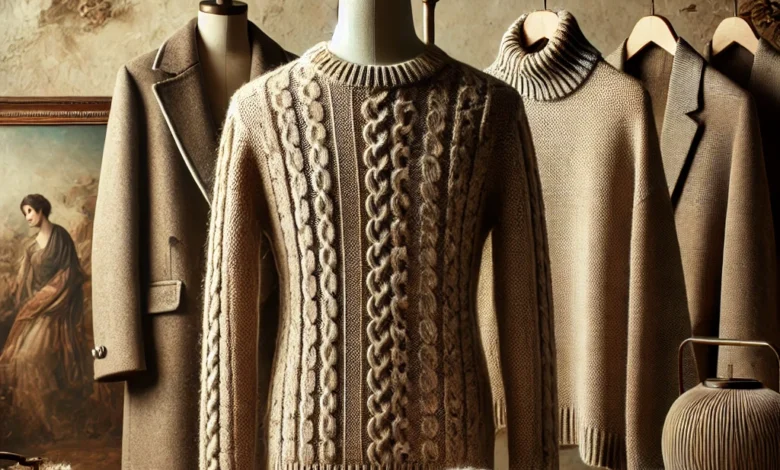The Timeless Appeal of Wool: Why Wool Never Goes Out of Style

Wool has been a wardrobe staple for centuries, admired for its warmth, durability, and versatility. From the ancient shepherds who relied on it to survive harsh winters to the modern fashion industry that continues to celebrate its luxurious qualities, Wool yarn remains an enduring material in clothing and textiles. Its natural properties, sustainability, and classic appeal make wool a fabric that never goes out of style.
1. A Rich History of Wool
Wool has been used by humans for over 10,000 years, dating back to the early domestication of sheep in the Middle East. As civilizations grew, wool was traded and valued across continents, from the Roman Empire to ancient China. Its ability to keep people warm while being breathable and moisture-resistant made it a practical choice in many climates.
In the Middle Ages, wool was so valuable that entire economies were built around its trade. The British wool industry, in particular, became a major economic driver during this time, and many European cities flourished as centers of wool production. Wool garments were a sign of status, and its cultural significance carried through the centuries.
2. Natural Properties That Endure
One of the primary reasons wool never goes out of style is its incredible natural properties. Wool is inherently breathable and moisture-wicking, meaning it helps regulate body temperature, keeping you warm in the winter and cool in the summer. It’s also naturally resistant to odors, stains, and wrinkles, which makes it a low-maintenance material in everyday life.
Another key benefit of wool is its durability. Wool fibers are incredibly strong, allowing garments to maintain their shape and structure for years, even with regular wear. Unlike synthetic materials, wool is also flame-resistant, providing an added layer of safety.
3. Sustainability of Wool
As the world increasingly shifts toward sustainable fashion, wool’s eco-friendly credentials make it even more appealing. Wool is a renewable resource, as sheep are shorn annually without harm. The fabric is biodegradable, breaking down naturally in the environment without leaving harmful microplastics, unlike many synthetic fabrics.
Moreover, wool production has a lower carbon footprint compared to the manufacturing of many man-made fibers. Wool’s durability also reduces the need for frequent replacements, contributing to a more sustainable wardrobe. Many brands and designers now prioritize wool for its environmental benefits, aligning with the growing trend of conscious consumerism.
4. Versatility in Fashion
Wool’s versatility is another reason it has remained a fashion staple. From formal wear to casual outfits, wool fits into nearly every wardrobe category. Classic wool suits, wool coats, and knit sweaters are timeless pieces that have been in style for decades and continue to be beloved by fashion designers and consumers alike.
Wool’s ability to be dyed in various colors and woven into different textures also makes it a favorite among textile manufacturers. Fine merino wool is often used in high-end garments for its softness, while heavier wool varieties are perfect for outerwear and blankets. Whether it’s a cozy cable-knit sweater or a sophisticated wool trench coat, the fabric’s adaptability allows it to seamlessly blend into both traditional and contemporary fashion.
5. Wool in Modern Fashion
Wool’s classic appeal doesn’t mean it’s stuck in the past. Modern designers continuously find innovative ways to incorporate wool into their collections. With advancements in wool processing techniques, the fabric has become softer, lighter, and more versatile than ever before. New blends of wool with other fibers, such as cashmere or silk, offer different textures and drapes, adding even more variety to the way wool can be used.
Additionally, sustainable fashion movements have reignited interest in wool for its eco-friendliness. Ethical wool production and recycling initiatives have become central themes in many fashion lines, ensuring that wool remains relevant in the modern fashion landscape.
6. Timeless Appeal for Every Generation
Wool transcends trends, offering a timeless appeal that resonates across generations. For many, wool garments evoke memories of warmth and comfort, passed down through family traditions. A well-crafted wool coat or blanket can become a cherished heirloom, reinforcing the idea that wool garments are worth investing in.
As fashion evolves, there is a growing appreciation for high-quality, long-lasting fabrics. Wool fits this bill perfectly, providing both function and style. Its enduring popularity among young and old alike shows that wool has a unique ability to remain relevant while other trends come and go.
7. How to Care for Wool
Despite its durability, wool requires special care to maintain its longevity. Washing wool garments by hand or using a machine’s delicate cycle with cold water is recommended to prevent shrinking. Additionally, wool should be air-dried to avoid heat damage.
Many wool garments, especially high-end pieces, benefit from occasional professional cleaning. Storing wool items in breathable garment bags and using cedar blocks or lavender sachets can help prevent damage from moths, which are attracted to natural fibers like wool.
Conclusion
Wool yarn is much more than just a fabric – it’s a timeless material with a rich history, natural properties, and modern-day appeal. Its versatility, sustainability, and enduring style make it a fabric that will continue to be cherished for years to come. Whether it’s in the form of a cozy sweater or a tailored suit, wool will always have a place in the world of fashion, proving that some materials never go out of style.




